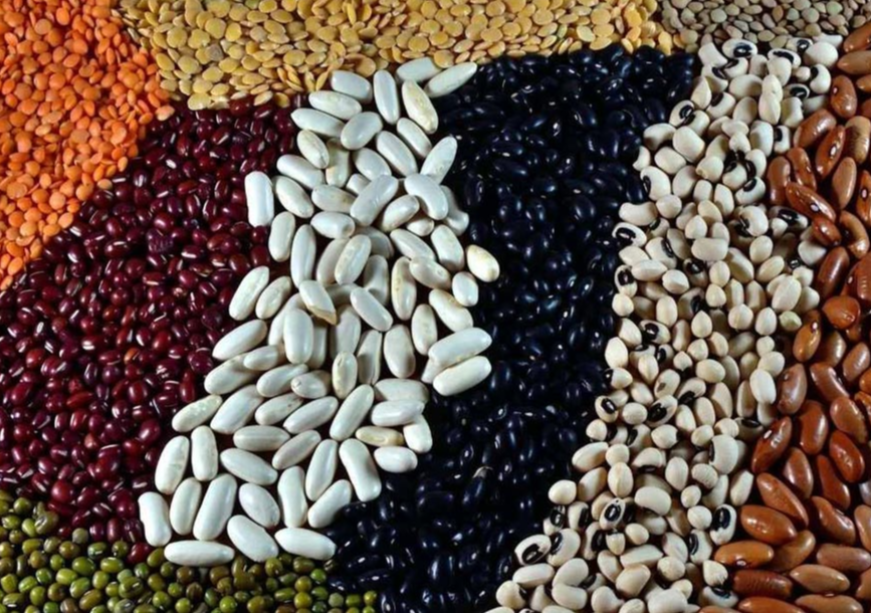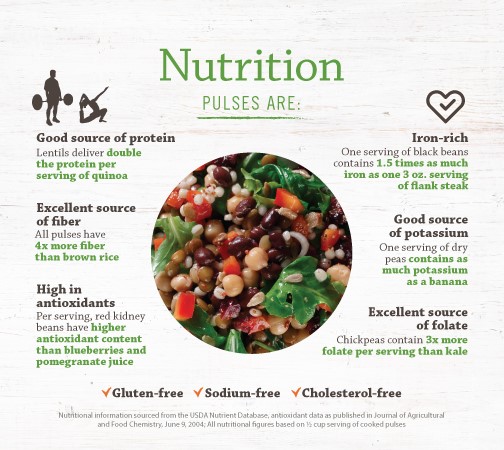
Pulses stand out as nutritional powerhouses, contributing significantly to SDG 2 (Zero Hunger) by providing a rich source of proteins, fiber, and essential nutrients. As a sustainable food source, pulses play a crucial role in promoting food security and combating malnutrition, especially in regions where access to diverse and nutrient-rich diets is limited. The cultivation and consumption of pulses, encompassing leguminous crops such as lentils, beans, and chickpeas, hold paramount significance in the context of achieving Sustainable Development Goals (SDGs). Beyond their nutritional value, pulses contribute to environmental sustainability, aligning with SDG 13 (Climate Action) and SDG 15 (Life on Land). Their unique ability to fix nitrogen enhances soil fertility, reducing dependence on synthetic fertilisers and mitigating greenhouse gas emissions. The cultivation of pulses also supports biodiversity conservation through crop rotation, fostering resilient and ecologically balanced agroecosystems. Pulses further resonate with SDG 1 (No Poverty) and SDG 5 (Gender Equality) by offering economic opportunities, particularly for smallholder farmers, many of whom are women. Moreover, pulses encourage responsible consumption and production patterns, supporting SDG 12 (Responsible Consumption and Production). Their integration into diets promotes a shift towards sustainable and plant-based food choices, fostering a more resilient and equitable global food system.
The cultivation of pulses also supports biodiversity conservation through crop rotation, fostering resilient and ecologically balanced agroecosystems.
The United Nations General Assembly in 2019, designated 10th February as World Pulse Day for raising awareness on pulses as a sustainable food source that offers both nutritional and environmental advantages. World Pulse Day provides an opportunity for various stakeholders, including governments, NGOs, and individuals, to come together and celebrate the significance of pulses in achieving Sustainable Development Goals (SDGs) related to poverty reduction, zero hunger, gender equality, and environmental sustainability.
Pulses being high in nutrients can help mitigate malnutrition. Compared to common cereals like rice and wheat, they have two to three times the protein per gram on average. When eaten with cereal, the amino acids in pulses balance out the amino acids in cereal, making for a well-rounded protein intake. Pulses also include iron and other important elements including potassium, zinc, selenium, phosphorus, and zinc, along with B vitamins. Pulses are one of the three pillars of the Food Sustainability Index and can help prevent and manage diabetes, cancer, heart disease, and obesity when consumed as part of a balanced diet.
 Source: https://www.usapulses.org/consumers/nutritious
Source: https://www.usapulses.org/consumers/nutritious
This year’s theme ‘Pulses: nourishing soils and people’ emphasises the benefits of increased soil microbial activity brought about by pulses, crucial for food security and long-term agrifood systems. One of the key contributions of pulses to soil health is their ability to fix atmospheric nitrogen. Pulses form symbiotic relationships with nitrogen-fixing bacteria, enriching the soil with this essential nutrient. This process enhances soil fertility and reduces the need for synthetic fertilisers, thereby mitigating the environmental impact of conventional farming practices. Pulses contribute to soil enrichment through their deep root systems, which help prevent soil erosion and enhance water retention. The organic matter produced by the decomposition of pulse residues further improves soil structure, making it more resilient and conducive to supporting diverse plant life. This ecological balance not only benefits the immediate agricultural landscape but also has positive ripple effects on the broader ecosystem.
The cultivation of pulses promotes sustainable agricultural practices such as crop rotation. Integrating pulses into the crop rotation cycle enhances soil structure, reduces the risk of pests and diseases, and improves overall soil health. This approach fosters biodiversity in agricultural landscapes, contributing to resilient and sustainable farming systems. Pulses are known for their efficient use of water resources. Their deep root systems help access water from lower soil layers, reducing the reliance on irrigation. In regions facing water scarcity, pulses offer a viable and sustainable option for cultivation, contributing to the resilience of agricultural ecosystems.
The organic matter produced by the decomposition of pulse residues further improves soil structure, making it more resilient and conducive to supporting diverse plant life.
The consumption of pulses has been linked to various health benefits, including the prevention of chronic diseases such as diabetes and heart conditions. Their low glycemic index makes them suitable for individuals managing blood sugar levels, while their high fiber content promotes digestive health and reduces the risk of colorectal cancer. With the rising interest in plant-based diets, pulses serve as essential protein sources. As an alternative to animal-based protein, pulses contribute to reducing the environmental footprint associated with meat production, aligning with the growing awareness of sustainable and ethical food choices. Pulses demonstrate resilience to climate variability, making them essential crops in the face of climate change. Their ability to thrive in challenging conditions, such as drought or high temperatures, positions them as key components in building resilient agricultural systems capable of withstanding the impacts of a changing climate.
The cultivation and trade of pulses have significant socioeconomic implications. Smallholder farmers, especially in developing countries, benefit from pulse farming as it provides income opportunities and improves livelihoods. Additionally, pulses contribute to rural development by fostering sustainable agricultural practices that enhance long-term food security. From the cultural and culinary significance, pulses have been integral to the diets of various cultures for centuries. From dal in Indian cuisine to hummus in Middle Eastern dishes, pulses form the backbone of diverse culinary traditions. Recognising and preserving this cultural heritage not only adds to the importance of pulses but also highlights their adaptability and versatility in meeting dietary needs worldwide.
Pulses contribute to rural development by fostering sustainable agricultural practices that enhance long-term food security.
While pulses offer numerous benefits, challenges such as market access, post-harvest losses, and the need for improved crop varieties persist. Addressing these challenges requires collaborative efforts from farmers, researchers, policymakers, and the private sector. Investing in research and development, promoting sustainable farming practices, and creating supportive policy frameworks are essential for maximizing the potential of pulses in nourishing soils and people. As we navigate the complex landscape of agriculture and nutrition, pulses stand out as champions in nourishing soils and people alike.
Shoba Suri is a Senior Fellow at the Observer Research Foundation.
The views expressed above belong to the author(s). ORF research and analyses now available on Telegram! Click here to access our curated content — blogs, longforms and interviews.





 PREV
PREV


